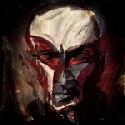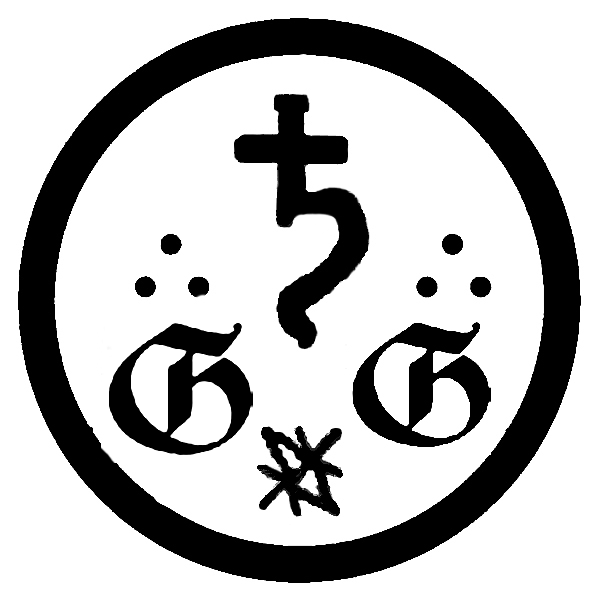FRATERNITAS SATURNI | 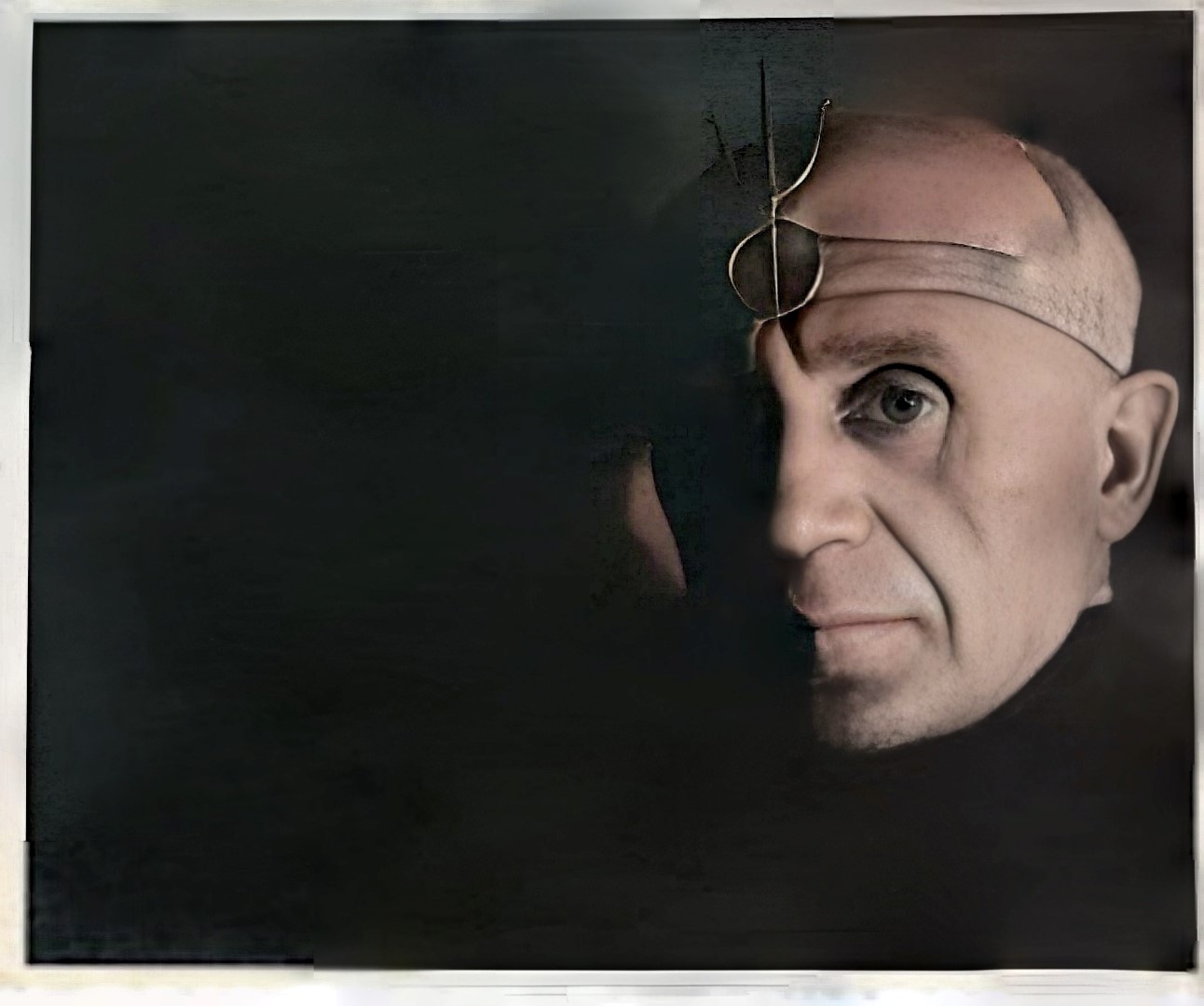 |
|
Preface to the two volumes "In Nomine Demiurgi Saturni" and "In Nomine Demiurgi Nosferati" that contain appr. 800 pages of facsimiles about the famous Saturn Order.
[See also the review of the second volume In Nomine Demiurgi Nosferati] The title of this chapter programmatically refers to this German secret society which we analyse generously seen from its "creative" angle. About the History the interested party will find a lot of further information in following books by P.R. Koenig
Why is the Fraternitas Saturni (FS) founded in the 20s known, famous, notorious and attracts a completely different kind of curiosity than the O.T.O.-groups although hardly anything is known about the FS except what is published in sloppy fairy tales? Apart from Eugen Grosche (1888-1964) its founder, who over a decade published his monthly "Papers for adapted occult art of living" and the pertaining "Lessons", there are seemingly creative protagonists who form the reputation and aura of the FS: Johannes Göggelmann (Saturnius), the prison officer Walter Jantschik (Jananda, Aythos, Levum, CIT), the chemist Guido Wolther (Daniel), the academic Adolf Hemberger and the official Karl Wedler (Giovanni) in the novel "Auf Teufel komm raus" ["Like The Devil"] which moulded a real sex and suicidal scandal in the entournment of the FS. What have these figures in common? Apparent are diligence and persistence. Just have a look at Grosche's monthly magazine which in the beginning was produced on carbon paper and limited to carbon copies at the end of the 40s. This magazine and the lessons were wrapped into statutes, circulars, reports, charters (a level on which the official Welder seemed to feel at home), and similar to the O.T.O. groups the anti-cultural rebellion and "religious" awakening of Thelema (of the first years) crawls behind uniform buttons and order decorations. All the here presented protagonists have in common that their fullness of imagination and the richness of the pertinent assimilation was and is limited. Seemingly they never rise above their "personal" problems in order to give form to a generally comprehensible artistical way. The mysogynist texts printed by Grosche (and reproduced here) clearly show why his widow sold all the papers of her deceased husband and never touched his universe again. All protagonists have their creative impulse combined with deadly seriousness in common. We try to explain our impressions with the example of Saturnius and hereby deliver the base for the analysis of the other protagonists. Johannes Göggelmann/SaturniusIn thousands of letters and drawings we find tendencies of behaviour and modelling whose emotionally enforced physiognomisations illustrate the attempt to construct a relation with an estranged environment through giving it an expressive and meaningful "face" (e.g. winged female demons). Generally a lot of the "art" of the occulture expresses changed experiences of meanings and relations whose tendency of formulating in schemes (suppression of expression, pseudo-academic vocabulary and explanations etc.) seemingly is opposed to emotionality (which serves to control unsupportable emotions). In Saturnius' art the reduction onto isolated and lost icons attracts our attention. It seemingly reflects his loneliness in society but also in the Fraternitas Saturni; isolation which also could find its release in logorrhoe, that is his thousands of letters.Here lies the base of gnosticism. Tendencies to hyperactivity and overstressed accentuation of the contents of the consciousness (e.g. everything is going to be interpreted in a saturnian- satanistic way) support the need of symbolizing new carriers of meanings. This creates a state of changed constants of conception and behaviour. And this leads to a changed expression of creativity (in the demonstrated cases: to its distinct reduction). Saturnius' creative output wanted to explain himself as a "human being", his biology, his relation to and with God and his position inside the Fraternitas Saturni. He seems to be conservative when compared to the other protagonists with their ad hoc flooding products of fantasy and seems to be far more limited in his strict consequency. Saturnius' inner conflict is mirrored in the technical. In his clumsy like drawings we find completely isolated shapes while on the other hand every spot on the paper is filled with ink. Sometimes the models seem to be soft and mellow but suddenly they become erratic, jagged and dissolved into geometrical structures; sometimes the drawings are done in a strong line, sometimes the same motives are thrown on the paper seemingly in an easy way. Saturnius loved to use pseudo-scientific formalisms: scheme-like representations, graphs, diagrams, experimental modes of use and a "specialised" language. This kind of geometrism can be interpreted as a sort of hallucinating away the sexuality and the sexual desires. And isn't spermo-gnosticism nourished by suppressed sexuality? It seems to be the norm for the creative occultis to prefer the content to the form (and exactly this attracts the tabloid papers). The visible entournment loses its significance because the relation to reality seems to be disturbed and its image seems to lose importance, as well. It is replaced by the need to express the inner reality of subjective experience and suffering which needs a specialised "language" to express itself. The capacity for abstract thinking and the consciousness of language are going to be changed in order to get hold cognitively of the partly extremely complicated ideas of occultism, to internalize them and to communicate them. Contrary to the artist, the creative occultist striving to express himself through images does not feel the need for stylistic devices and ways of expression. He uses the traditional consciousness changing methods that release states of trance (sport, music, dance, drugs, rituals, yoga) and stiffily raids the supermarket of traditional symbols (e.g. Saturnius: little devils with pitchforks, vampires with long finger nails, mermaids, skulls; Guido Wolther prefered pornographic drawings and Walter Jantschik still uses Baphomet). As long as creative occultists move along limited styles and taboos of the mass culture (in which the occulture dwells) as long they seemingly are not capable to create Art. The creative works in our two volumes on the Fraternitas Saturni seem to be crampy and possessed by subjective topics. The presented objects and themes mainly seem to be a support to the self in order to offer inner stability. Mirroring the reduced performance of expression and inhibition of the protagonist, Saturnius focused on the "dark satanic forces", and Guido Wolther tiringly circled around sexuality. Exactly these two topics characterise the Saturn Orders both from the inner (through its members) and the outer (the reception through critics and journalists). The reduction onto club mania after Eugen Grosche's death is obvious to some of the members only. Here we can raise an important question: who collects such creative works of occultists? To whom do they give meaning? Since our two volumes are focused on the Fraternitas Saturni we neglect Austin Osman Spare, Aleister Crowley, Phyllis Seckler, Linda Falorio, Maggie Ingalls, Kenneth Grant, Steffi Grant etc. Also we do not discuss the drawings of Quintscher's pupil Josef Anton Schuster (Silias, 1896-1968) whose tome of diary of 1931 contains the magical instructions of male and female guardian angels. Silias' diary reminds of the Art Brut of Adolf Wölfli. In the 1920s, through his "Bauherrenorden", Wilhelm Friedrich Quintscher (Rah- Omir, 1893-1945) tied in with the Fraternitas Saturni which soon distanced itself. Quintscher's "Adonism" often is brought into context of the FOGC ("Freimaurer Orden des Goldenen Centuriums") invented by Franz Bardon and Quintscher. The FOGC is a typical example of the paranoid and proto-fascist worldview of many occultists. But this time, it is not a Judaeo-Masonic conspiracy: Bartzabel, demon of discord, quarrel hate and anger rules; Astaroth, sometimes female demon of sexuality and fertility; Belial, charged for excess is depraved and vicious; Asmodeus, angry, jaleous and radical; and Belphegor who feeds on human meat. The later Grandmaster of the FS, Guido Wolther wrote some FOGC- rituals which are considered by occultists as very important.
Other FS protagonistsWhile Aleister Crowley and "the" O.T.O. only coyly confessed to sexmagic, Eugen Grosche directly stormed the aim in his saturnian universe, at the beginning.In course of its development the FS constantly piled up esoteric- occult ballast (after all, the members needed monthly entertainment with newsletters) and finally after the death of its founder the whole organisation limited itself onto earthly nothings or re-prints of old material. Vice versa: they returned to the source of the gnosis. As true gnostic organisations the Saturn Orders are rooted in the world. In other words: there is nothing irrelevant in magic. Therefore, Eugen Grosche reglement even details like "the occult in the art of living" in the living room. What seems to be petty bourgeois at first sight (just have a look at the photographies in "Materialien zum O.T.O.", page 92, where the saturnian homo superiors are grouped around several bottles of eau de vie in their sofas) gnostically is the "rotten place" wherefrom Pleroma is sweated out. In order to document the importance of this root we present the conflicts around Wolther, Hemberger and the murder in Jantschik's family. Saturnius, Jantschik and Wolther have contributed to the the swing of the FS, each in his own peculiar way. We'd like to stress that we do not want to satisfy the cheap thrills of the tabloid press, to denounce someone or to contribute to the increasing privatisazion and scandalisation in the landscape of the media. In the contrary: we regret the limited point of view of self-styled journalists who for instance consider Walter Jantschik a "danger for society". The colourful events around Saturnius, Wolther and Jantschik mirror the creative aspect that can be found outside the average consciousness. Only this stance justifies the facsimilation of documents that otherwise (seen through a frog's perspective) rashily are considered "rumour" but in reality mirror what influenced the Order's History decisively. Walter Jantschik (born 9.11.1939)Since we discussed Jantschik (alias Jananda successor to Wolther as the Grandmaster of the FS) already in several of our publications, we like referring to these books.The extraordinarily friendly and helpful prison officer Jantschik lives in modest circumstances. He is married for the second time to a woman from Mauritius since 1973 with whom he shares two children. His family completely ignores his religious activities and they do not feel disturbed by the fact that the complete apartment is stuffed up with esoteric stuff, the wardrobes in the children's room, front room, corridors, just everything; in their sleeping room there even once was Baphomt's goat head hanging over the bed. Jantschik infatiguely is working at himself. In meters he piles his studies' documents, records of Open Universities which he meticulously digests and underlines with pupil-like earnest, and papers of occult secret societies. Since the early 1970s he enjoys a very peculiar reputation in the occult scene which meanwhile became worldwide notorious. Early he attracted the interest of the German cult observers F.-W. Haack and Horst Knaut. Jantschik's friendliness and openness lead to his downfall when Haack wangled his correspondence with Saturnius out of him and published it in the same Publishing House in which P.R. König's works now are published. As a compensation Jantschik was allowed to publish his informations about the Fraternitas Saturni alias Aythos in the same Publishing House. The "Hiram Serial" of the A.R.W therefore has prime responsability for the revival of occultism in the German speaking area since the 70s. Jantschik remains a well functioning wheel of society. This differs him from Aleister Crowley who thanks to his financial resources seemingly completely felt out of society and lived out his need to re-belong to it in annexing all sorts of Orders, churches, titles and offices. Again and again Jantschik seems to present himself as a "victim" and allows publishing his mundane address on the website on the Fraternitas Saturni. Quarrel or misunderstandings seem impossible with him. The book serial on the O.T.O. Phenomenon owes a lot to him because Jantschik is a busy collector of everything that he could lay his hands on (for example, Janschik was a co-founder of the German wing of the "Caliphate"), since years. Similar to Saturnius who fed the old FS with ideas, in the early 1980s Jantschik supported the follower organisation of the FS, the Ordo Saturni with ideas, especially regarding the sexmagical aspects. Nevertheless, he turned out to be unsuitable for the office of Grandmaster of the FS where he regretted the plotting and scheming, the caboodle and the cungainly showing-offs which seemingly kept the Order alive -- a milieu that is documented with these two volumes on the Saturn Orders since it primarily influenced the History or the Order. There is an eye-attracting parallel to the most famous artist of state-bound art, Adolf Wölfli (1864-1930). Wölfli considered algebra as the peak of all science and art and therefore called himself "Allgebrathor". Parallely Jantschik calls himself "Baphometor". Exactly like Wölfli, Jantschik lives according the need to obey his horror vacui in his universe. While Wölfli drew and scribbled on every millimeter of his cardboards, Jantschik alias CIT has Baphomet swelling through all his realities. Inexhaustibly he writes rituals, essays, meditations about Baphomet, driven by the old lady Kundalini. "Sexuality [...] and the infinite ideas and possibilities of my extraordinary imaginations created more and more sets for my unbelievable enterprises. In my lycanthropic experiments and illuminations it was possible to establish contact with the peculiar trans-saturnian planets regarding sexmagick and eventually to gain new insights. Beings and genies of Uranus, Neptun and Pluto initiated me into the highest mysteries and the highest sexmagical initiations as well as into the magical Ankhur. In the ultra-imaginative realm of Sperm and Mens I was initiated by the highest master of the plutonian ejaculation as the "Master over the seminal-menstrual currents of the upper and lower pleroma"." We have Jantschik to explain himself in extenso especially for our two volumes on the Saturn Orders because he is an example of the creative aspect of our German speaking occultists. "Yes! I am an expert on philosophical Baphometism and gnostic Baph-Magic. The art aspect can be found in the recognition of an immanent transcendence of a philosophical-hermetical Baphometism. I lean towards an artistic description of a gnostic-hermetic Baphometism and its immanent transcendence. Through transcendence of gnostic- artistical creations I want to render the purely spiritual in the magic of the philosophical Baphometism experiencable. With my scientific-philosophical-hermetical performances I intend to transform the now widely unknown Baphometism into a new paradigmatic form of art in the consciousness of the interested parties. This new paradigmatic form of art is a descriptive art which turns the abstract philosophical-hermetical and occult contents of Baphometism visible. The new aeonic structure which is going to be part of the forthcoming Baphometism is what I want to present through my scientific researches: To explain the meaning of everything via "descriptive art" through analysis of the philosophical-gnostic-hermetical Baphometism. Knowledge is Power! Ora, lege, lege, relege, labora et invenies! Which means: Pray, read, read, read, re-read, work and you will find! -- The striving for divine knowledge equates the striving for beauty and order. The larger the knowledge the more sublime the striving for beauty. Perfect knowledge comprises of the expression of beauty and order in its most idealistic substance. There is no striving for knowledge without the expressionability of the beautiful. The more a Baphometist penetrates the integrality of knowledge the larger his expression of beauty becomes. A magician or Baphometist who strives for everlasting knowledge ontologically-ontically- pneumatically connotates therefore a structuralization of the beautiful and the ordered which can not be expressed otherwise." (24 August 1998). Guido Wolther/DanielWe recommend the many drawings in the print-version of "Abramelin & Co."Relatively early in the 1960s, Wolther ceased to exercise his profession as a chemist but tried to gain his money as a freelancing bookseller, always at the border of the subsistence level. Attracted by what seemed to him "puzzling, disturbing and dangerous" at the same time he lead a bohemian life style together with his wife, the French Andrée Mériam Wolther (order name: Rahel; a jewess born in Bayonne who suffered under the Nazi regime and with whom he has a son, Patrick). As Grandmaster of the Fraternitas Saturni he obliged to the wishes of many potential clients (e.g. the academically spoiled occultist Adolf Hemberger) and produced scandalizing sexmagical drawings and eventually created an exotic reputation. Without knowing exact biographical dates, a pluto-ritual celebrated by Wolther below the depth of the earth's surface might give hints to a unresolved and problematic relationship with his parents. In August 1962 and September 1963, allegedly Wolther and his wife tried to "bring forth the devil from Hell" in a "magnificant stalactite cave in 250 metres below the earth" with the help of burned antimon, uranium salt, thoriumoxyd, strontium and petroleum (a recepy received by Andrée Mériam in trance by "high saturnian intelligences"). "We are attracted by the unreal and mysterious -- we just "have to" ... we are driven to discover and to work --, work magickally. Who met us knows that we are no "esoterical fanatics" but that we know how to skillfully and scientifically thoroughly exercise our operations." The prime mother is evocated with the "barbaric sounds". "Onia ... Heva!! Onia ... Chavah! Chavah! Heva!! Ino ... Rea! Ria! Rua! Oia! Uuu ... Nahema! Nahema! Uuu! Oie-Ona- Uuea-Uuu! Aie, Aonie, Lilith, Lilith! Lilith! Jahou! Juhooe! Jaaaaheluu! From the deepest depth cometh forth you forces of Pluto! Heareth my call in the depth, rise forth from the transuranos - transuranos - rise forth. Plutonian powers I enforce you to show yourself. Agiel be the mediator, Arratron be the mediator! I call Saturnus, guardian of the threshold, Saturnus, Saturnus, Saturnus open the door to transuranos. Open the door to transuranos. Uuuu Jiiii." A female demon with the body of a scorpio and the face of a woman appears. Frau Wolther passes out. The demon's body becomes human and "raises his hand against my wife". Guido Wolther utters his needs: "Therefore I beg you for the power to reign over people -- the power to be master of an organisation, of an occult society which represents the power on three levels -- and this power I want to partake with my wife." But the demon gets upset because "the woman ... is going to betray you, little man". Exit prime mother. Wolther's sexmagical drawings of the early 1970s consisted of the usual egpytian and hebrew symbols that can be found in western occultism. Wolther focused on awkard images of the penis and vagina. Similar to Saturnius, Wolther seemed to claim scientificity and authenticity in order to ascribe meaning to his private reality. His world wanted to go beyond the normal, he wanted to step over the threshold which causes death to others or "leaves them ill at body and soul". Wolther's occult career looks like a sort of an exorcistic ritual with which the protagonist tried to banish unbearable tension of the own existence in order to survive. Wolther's work "ended" in complete inwardness: there are no known drawings or writings after 1974. This can be seen in the context of his huge disappointment with the Fraternitas Saturni (as it is documented in our two volumes). Without knowledge of further biographical details (and because analytical interpreation of drawings and contents of rituals seem to be problematic nevertheless there are an astonishing amount of female demons both in Saturnius' and Wolther's world) there seems to be no parallel of occult world with the normal world, as it is possible in Jantschik's universe. Especially there seems to be no turning back. After 1974 (?) he laid down his "instruments" in order never to use them again. Was/is the "creative work" of Wolther therefore a successful try of a self-recovery at the border of society? Grandmaster of the FS Walter Jantschik knew both, Saturnius and Wolther personally. "Daniel and Saturnus achieved tremendously with their magical researches. It is to assume that their creative work represented a sort of ritual getaway from unbearably being in a bourgeois and boring society. Of course they did not identify with this society: they always complained that there are no suitable individuals for a true magical work and who could continue the MAGICAL WORK." (24 August 1998). At the moment Wolther lives ill and secluded, supported by his wife and the Vienna Emil Stejnar (whom we know from our ABRAMELIN & Co. book). Adolf Hemberger (1929-1991)Early he was interested in politics and economics and became active in left winged student's organisations. One of his first publications was about anarcho-syndicalism. Professionally he was a Dipl. economist Ph.D. who teached in 1967 about Education at the Pedagocic Institute in Fulda. Later he became professor of Methodology and Theory in Science at the Justus-Liebig-University in Giessen and chief of the Institute for Behaviourism and Preventive Medicine in Kirchvers, where he lectured about Education and Psychosomatic of horses.Hemberger emphasised on a family live and therefore was heavily disappointed when his all-beloved wife and daugher did not only not share his occult interests but also neglected them completely. According to a close acquiantance of him, also his colleagues at University "didn't like Hemberger very much" which put him under pressure to profess effectiveness and authenticity. It is easy to assume that familiar, monetary and academical pressure drove him to contact spiritual entities. He didn't consider himself to be a creative individual but a researcher in the far away field of the secret societies. At the end of the 1960s he received a monetary support by the German Research Society in Bonn and eventually published his first volume on the Fraternitas Saturni under following pompous title: "Organisationsformen, Rituale, Lehren und magische Thematik der freimaurerischen und freimaurerartigen Bünde im deutschen Sprachraum Mitteleuropas, Teil I, Der mystisch- magische Orden Fraternitas Saturni - Versuch einer religionsphänomenologischen, soziologischen und tiefenpsychologischen, an der Werturteilsfreiheit der Heidelberger Schule orientierten Analyse"; published 1971 by himself. |
| In over 30 volumes about the Occulture (20 volumes on the FS, several about Freemasonry, Pansophia and Rosicrucianism, Adonism, A.M.O.R.C., Weltspirale, etc. etc.) he reduced his publications onto the level of purely facsimilations of his collected archive. But contrary to the editor of the O.T.O. Phenomenon who intends to create a critical and distanced stance which offers to objective researchers a base for mirroring the mood of our society, or which offers to occultists some practical material in order they can stabilize or expand their subjective universe, Hemberger did it to justify his first publications. In these first publications he wrote still own texts about Masonry or the FS and then produced so much factual nonsense that he was neglected by experts. His eventual flight into the undifferentiated and conceptless facsimilation seems to be a desperate clipping on the vanishing reality, also a defence against the complaints of not having digested his many documents, or to face the complaint of ill- willed slander (as assumed in an unofficial expertise by the Masonic Research lodge Quatuor Coronati). | 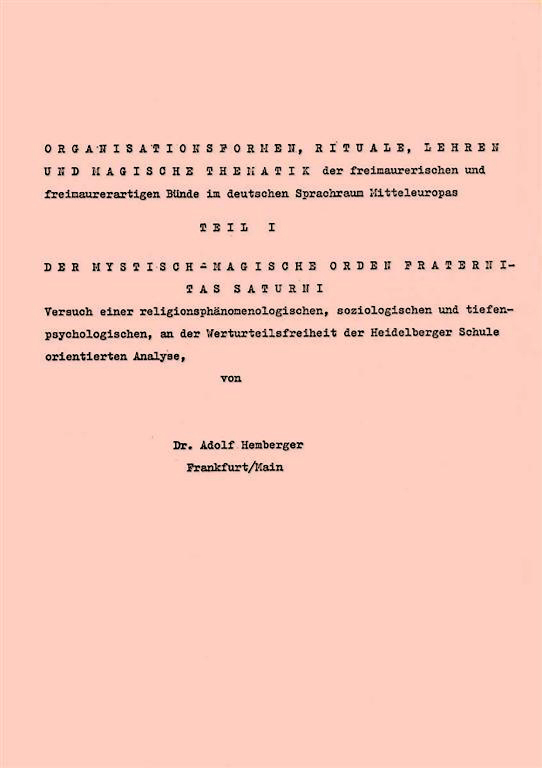
|
|
Hemberger was responsable that Wolther's sexmagical drawings and
writings have been brought in circulation. In the mornings he paid a
phone call to Wolther who then hastily threw something on paper which
was going to be sold to the highest bidder. As rumour goes, also the
expert on "cults", Friedrich-Wilhelm Haack, founder of our Publishing
House A.R.W., was involved in all of this. Psychologically, mechanisms
of transmission and counter- transmission interfered and caused
falsified creative products (e.g. Wolther's 18°-drawings or alleged
FOGC-rituals, see above): artefacts without any artistic
authenticity.
Similar to Jantschik, Hemberger interfered with his own commentary and notes in his documents. But while Jantschik does this for his own education, Hemberger sold his piled fotocopies then as "scientific". There is not much to say about the content of the texts that Hemberger wrote himself. Although they seldom contain seemingly empty euphemisms à la Jantschik, they could be friendly described as "naive nonsense" if not so many people believed what foamed from his typewriting machine (especially supported by his book "Experimental-Magie" published under the name of Klingsor in 1967 and which upset many FS-members). Oscar Schlag remembered that Hemberger spent the whole day at the fotocopy machine of the University in order to produce his "books". Because the edition of these very sloppily made "books" often had been limited to less than 100 copies they are extremely rare on the occult market and are considered to be and contain the "pure and ultimate truth" therefore. Peter-R. Koenig, 1998. [This translation was kindly supported by Stephen L***.] Deutsche Version: Saturn: Raumkunst, Lebenskunst, Liebeskunst Kunst als Gedächtnis der Okkultur? Tradução portuguesa: Saturno-Gnose: A Arte de Amar e Viver. Versiune romana: Arta de a iubi si de a trai - Gnoza lui Saturn. Appendix regarding volume two: "In Nomine Demiurgi Nosferati"The representation of two jew-baiting ariosophic texts from the 1930s shall throw light on one of the many mentalities which approved of the Fraternitas Saturni. Seemingly, Ariosophy accepted Eugen Grosche's works as a "reliable guide" and was irritated by the alleged masonic structure of the organisation only.The contents of the two tomes on the Saturnian Orders: In Nomine Demiurgi Saturni "1925-1969"
In Nomine Demiurgi Nosferati "1970-1996"
|
These two books are out of printMy below email address does NOT connect you with my publisher and I will not forward any order See also http://www.religio.de/arw/ |
 |
Guido WoltherSome of his sexmagical drawingsGuido Wolther: Sexualmagische Zaubermittel 18° Gradus Pentalphae, 1971 [integral version] Die Symbolik des "Gradus Pentalphae" | Das Prat-Alpha | Die Schlüsselworte, 1973 Zum Gradus Pentagrammatus (= Gradus Pentalphae) Ritual des Alten und Mystischen Ordens der Saturnbrüderschaft "Ordo Mysticus Saturni" AMOS\OMS [one of the many secret inner orders within the FS, founded in 1968, see Das O.T.O.-Phaenomen] [adoration of the sun] Texte zum Thema GOTOS-BüsteDie GOTOS-Büste. Winke, Anregungen und Ratschläge für die Brüder und Schwestern der Loge Fraternitas SaturniWalter Jantschik: Die GOTOS-Belebung
De Destillatione "Suci Mulieris" Ad Servandam Valetudinem Magi HistoryIn Nomine Demiurgi Nosferati: History and protagonists
Tradução Portuguesa: In Nomine Demiurgi Nosferati Versiune romana: Fraternitas Saturni. Istorie si protagonisti
ceská verze: SATURNSKÁ GNÓZE
Tradução Portuguesa: Saturno-Gnose: A Arte de Amar e Viver Versiune romana: Arta de a iubi si de a trai - Gnoza lui Saturn |
|
The third volume on the Fraternitas Saturni.
Johannes Maikowski: Fremdenlegionär, Gefangener im Stasi-Gefängnis Berlin Rummelsburg, Zweimal Grossmeister, Communitas Saturni und Communitas Solis,
Grossloge Gregor A. Gregorius/GAG. Eugen Grosche: Bittere Nachkriegszeit, Die Stasi-Akten, Alt-Nazis in der Loge. Karl Wedler: Der Kelch, Die Palastrevolution, Die Kopiermaschine. Sexualmagische Unruhen um den 18°. Experimente mit Johannes Göggelmann und Horst Kropp. Der Ordo Saturni von Dieter Heikaus. Grossmeister und Stagnation: Guido Wolther, Walter Jantschik, Stanislaus Wicha, Joachim Müller, Heinz Conrad, Hartmut B., Ralph-Peter T. Zusammenschluss der GAG mit der F.S. Die Logendämonen: Der Meister GOTOS — Egregor? Exorial.
Und: Wolf Rösler, Wilhelm Uhlhart, Richard Tschudi, die Elixiere des Teufels, die Tropfsteinhöhle in Frankreich, Walter Englert, der Berg Ipf, Horst Knaut, Adolf Hemberger, das Saturn-Kloster, Michael Gebauer, Martin S., Federico Tolli, Calix Borealis |
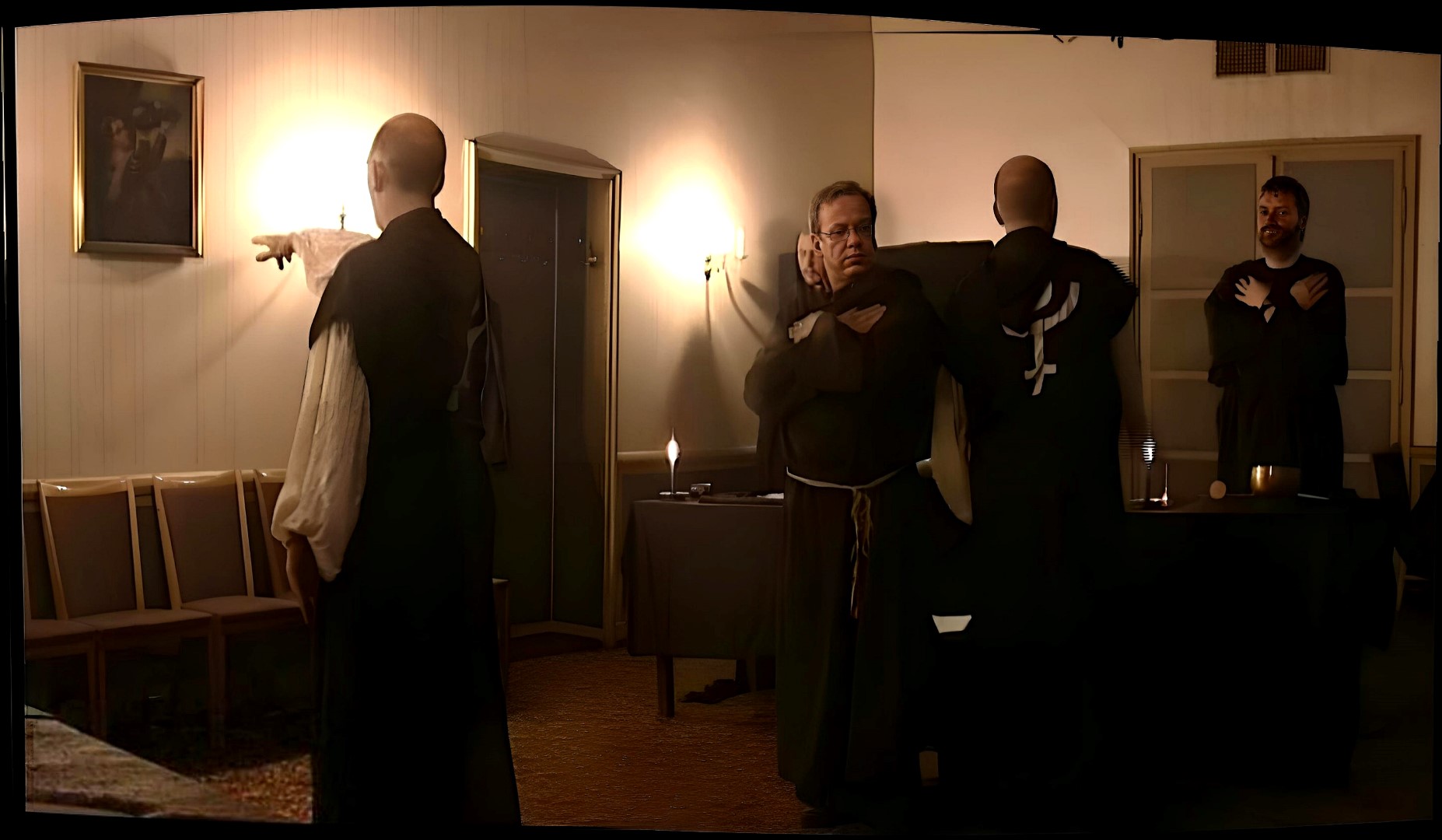
|
Johannes Maikowski
 Myth: The central concept in F.S. lodges is that of the lodge Egregore (group spirit). GOTOS by name and created as a bust. This is also the highest rank in the F.S. (from 'Gradus Ordo Templi Orientis Saturni'). Truth: Johannes Maikowski, Grandmaster of the Fraternitas Saturni, appointed as successor by Eugen Grosche in December 1963, speaks with Peter-R. Koenig in August 2011. |
|
Johannes Maikowski berichtet über die Büste GOTOS. Was geschah damit nach dem Tode von Eugen Grosche? Wofür interessierten sich die Mitglieder? Warum der Name Saturn? |
 Eugen Grosche ernennt Johannes Maikowski am 23.12.1963 zu seinem Nachfolger als Grossmeister der Fraternitas Saturni. Wie erfolgte die Erhebung in den 18°? Was war mit Walter Englerts 18°? |
 Johannes Maikowski erinnert sich an Walter Englert, Margarete Berndt, Karl Spiesberger, Herman Wagner, Walter Jantschik, Horst Kropp, Guido Wolther und an den Putsch 1962, angezettelt von Karl Wedler und Wolf Rösler |
 Bis vor seinem Tode war Eugen Grosche (1888-1964), der Gründer der Fraternitas Saturni, völlig gesund. Es gab keinen Logenraum. Wilhelm Reichs ORGANON-Kasten. Was hat Grosche am meisten interessiert? Was wusste Johannes Maikowski / Immanuel von Grosche? Ria Grosche war immer alleine. Gregorius war der Über-Papa. Eugen Grosche war Mitglied der Evangelischen Kirche. |
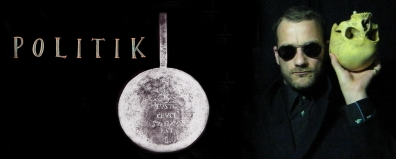 Eugen Grosche hat nie über seine Emigration in die Schweiz und Italien gesprochen. Er hat sich auch nie über seine politischen Ansichten geäussert. Grosche lebte von seiner Buchhandlung und den Mitgliederbeiträgen. Warum hat Grosche Nazis in der Fraternitas Saturni geduldet? Es fiel niemals ein antisemitisches Wort. Miriam Wolther, eine ehemalige jüdische KZ-Insassin, hat sich ebenfalls nie geäussert. |

|
 Autogenes Training - Yoga für den Westen - Johannes Heinrich Schultz - Rückverbindung mit der Gottheit - Anbindung an Gott - Geistseele - Hypnose - Fraternitas Saturni - Traumexerzitien von Gregorius / Eugen Grosche |
|
|
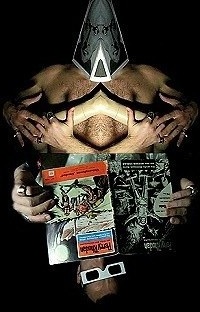
|
|
Main page about the Fraternitas Saturni
Main page about the Typhonian O.T.O.
Pictures + Documents
To the other Chapters of the English online version of "The O.T.O. Phenomenon" book
O.T.O. Phenomenon navigation page | main page | mail
What's New on the O.T.O. Phenomenon site?
More about all this in: Andreas Huettl and Peter-R. Koenig: Satan - Jünger, Jäger und Justiz
Scattered On The Floor
Browsing Through The Rituals
|
